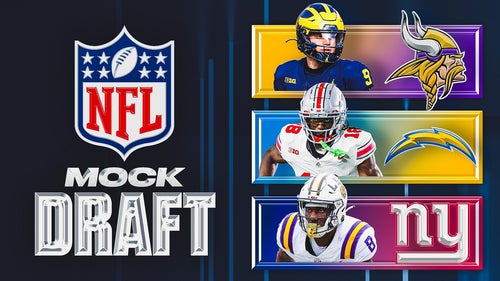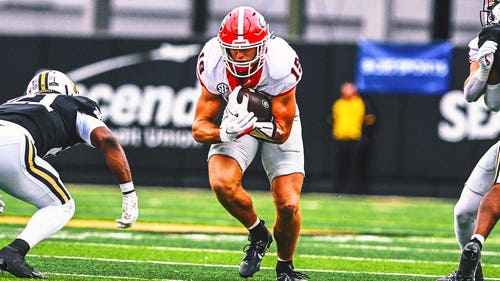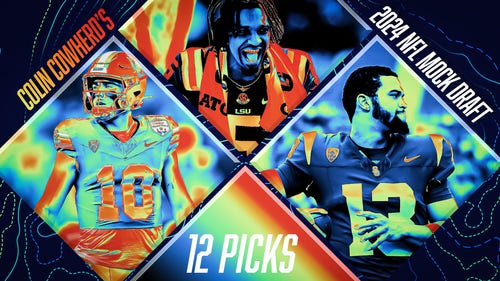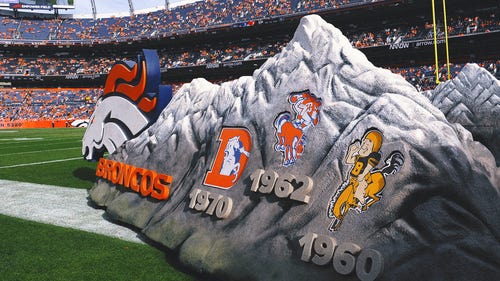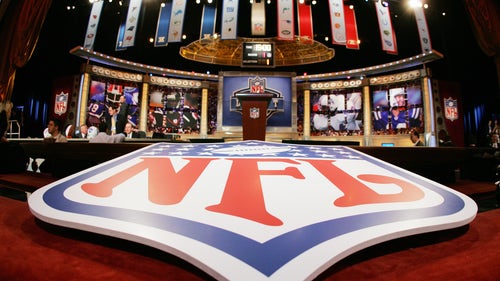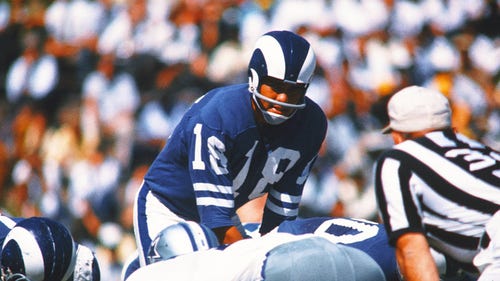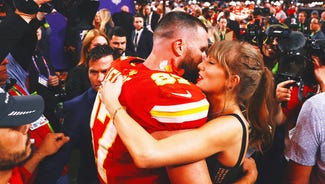
Sabols turned football into religion
Only Branch Rickey’s decision to sign Jackie Robinson had more impact on American sports culture than Ed Sabol’s decision to film his son’s high-school football games.
In 1947, by breaking the color barrier, Rickey and Robinson legitimized and calcified baseball as our national religion, and unwittingly sparked our civil-rights movement. Thirteen years later, Ed Sabol and his football-playing teenage son Steve unwittingly set into motion the innovation that would undo baseball’s near-century stranglehold on the American consciousness and transform football into our new religion.
Inspired by the sideline movies he shot of Steve’s prep games, Ed Sabol launched a small production company that bought the rights to film the 1962 NFL Championship. Three years later, NFL Commissioner Pete Rozelle convinced his owners to buy Sabol’s company, rename it NFL Films and give Ed and Steve Sabol unprecedented access to dramatically document the league’s games, practices, characters, personalities and players.
That creation — NFL Films — single-handedly redefined America’s national pastime.
Without NFL Films, its miked-up players and coaches, slow-motion football spirals, John Facenda- and Harry Kalas-voiced highlights, "Inside the NFL" and "Hard Knocks," the National Football League still would trail Major League Baseball in terms of popularity, relevance and importance rather than dwarf MLB (and all other sports) in every category.
Ed Sabol was inducted into the Pro Football Hall of Fame in 2011. Steve Sabol, who died earlier this week of brain cancer, will soon follow his father into Canton. Their contributions to football can’t be exaggerated. Their impact on American sports culture is just now being fully explained and understood.
I admit, I was late to fully appreciate the Sabols. It wasn’t until Ed Sabol went into the HOF before Willie Roaf, a deserving player, that I put much thought into Sabol’s contribution to the game. It wasn’t until this week when Steve Sabol passed that I considered the Sabols’ overall impact on the sports world.
How did we get here? How did football become our religion? Who built the pulpit from which Tom Brady, Peyton Manning and Ray Lewis preach?
It’s not as simple as stating that baseball moves too slowly for a society with attention-deficit disorder, or that baseball is too cerebral for dumbed-down America. Those explanations are insulting and inaccurate. No sport requires more thought than football.
Besides, football didn’t rise because baseball fell. Football rose because the intimacy, clarity, immediacy and relative transparency of television exposed football’s dramatic superiority.
What NFL Films made obvious is that the stakes are much higher in football than any other sport. Football is ride or die, life or death. Baseball and basketball are games. Ronnie Lott sacrificed the tip of a finger so he could play a full season in 1986. Every Sunday there’s at least one player in each contest who is a game-time decision, a potential Willis Reed ready to hobble through 60 minutes of battle.
NFL Films brought this reality into our living rooms. We could hear the grunts and groans, the yells and screams and see the postgame locker-room scenes of exhausted men celebrating wildly or somberly dressing. They drink beer and eat fried chicken before, during and after baseball games. For the most part, NBA players save their emotion for the playoffs.
The Sabols and Rozelle unleashing NFL Films to attack Major League Baseball was the equivalent of HBO and David Chase sicking The Sopranos on network TV. Hill Street Blues, Grey’s Anatomy and NYPD Blue seemed rather pedestrian compared to Tony Soprano.
Over time, NFL Films made baseball feel like Three’s Company. OK, that’s a bit harsh. Baseball is The Andy Griffith Show, a classic comedy we still enjoy primarily for its capacity to evoke feelings of nostalgia. But the comedy TV era is over. We still enjoy a consistent television laugh, but gritty, dark dramas drive our conversations.
Once you saw The Sopranos, your appetite for less-compelling, less-realistic television waned. Moving forward, you wanted The Wire, Mad Men, Breaking Bad, The Shield, etc. NFL Films made you want more football, more drama. The recent NBA renaissance is directly related to the human drama we could easily identify and see in LeBron James and the Miami Heat. Modern television demands heartbreaking consequences and/or life-affirming conquests.
Football gives you that for nine hours on 17 Sundays, countless hours during training camp and in abundance throughout the playoffs. NFL Films captures it all.
The Sabols artfully packaged football’s brutality and created a highlight, debate, reality TV show in 1977 called “Inside the NFL.” Every element of modern-day ESPN, in my opinion, originated from HBO’s “Inside the NFL.” It’s not a coincidence that ESPN was created two years after the creation of “Inside the NFL.”
It’s the most influential show in the history of sports television, more powerful than “Wide World of Sports.” The Harry Kalas-voiced highlight packages that aired on “Inside the NFL” were the novel-book version of Howard Cosell’s movie rendition on “Monday Night Football.”
NFL Films was the key to football exploiting sports’ transition from radio to television. Baseball never had a counter for NFL Films. No sport does.
“Over the last 35 years, the names, faces and stars have changed on Inside the NFL — (Len) Dawson, (Nick) Buoniconti, (Bob) Costas, (Dan) Marino, (Chris) Collinsworth and (Phil) Simms,” Inside the NFL’s current executive producer Pete Radovich told me. “But one star has remained constant, and that’s the NFL Films highlights. They’re the reason the show is the longest running in cable television.
“By Wednesday every fan has seen every NFL highlight several times. But they watch our show because now they get to see those same moments ‘Sabol-style.’ They get to relive their team’s winning touchdown through the eyes of the cameramen who were taught by Steve Sabol. They get to see highlights edited by people who were mentored by Steve. They get a new perspective because of the way the producers, the same producers trained by Steve, put the highlights together. Because of Ed and Steve, football became the most — and probably the only — cinematic sport in America. Baseball, basketball and hockey highlights live on ESPN in video form on TV. NFL Films highlights could be shown in a theater.”
The Sabols turned football into The Godfather.
That’s why there is so much reverence for Ed and Steve Sabol among football executives and media. All of us, from Peter King to Chris Mortensen to Mike Florio to Jay Glazer to Michael Silver to gambling degenerates such as Bill Simmons, owe a huge debt to the Sabols. They were the rising tide that lifted all of our boats.
They gave us a new national pastime.






































































































































